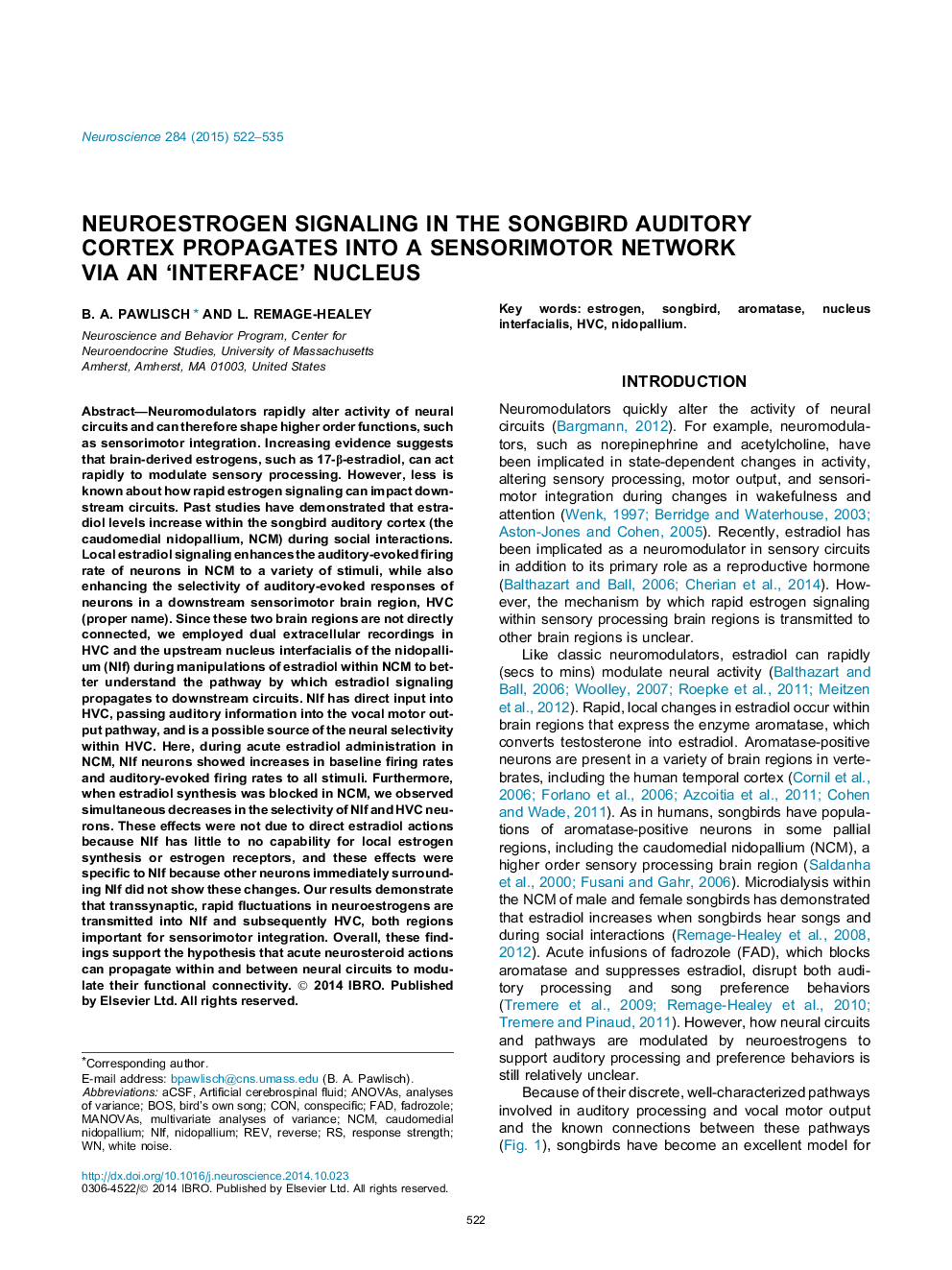| Article ID | Journal | Published Year | Pages | File Type |
|---|---|---|---|---|
| 6272915 | Neuroscience | 2015 | 14 Pages |
Abstract
Neuromodulators rapidly alter activity of neural circuits and can therefore shape higher order functions, such as sensorimotor integration. Increasing evidence suggests that brain-derived estrogens, such as 17-β-estradiol, can act rapidly to modulate sensory processing. However, less is known about how rapid estrogen signaling can impact downstream circuits. Past studies have demonstrated that estradiol levels increase within the songbird auditory cortex (the caudomedial nidopallium, NCM) during social interactions. Local estradiol signaling enhances the auditory-evoked firing rate of neurons in NCM to a variety of stimuli, while also enhancing the selectivity of auditory-evoked responses of neurons in a downstream sensorimotor brain region, HVC (proper name). Since these two brain regions are not directly connected, we employed dual extracellular recordings in HVC and the upstream nucleus interfacialis of the nidopallium (NIf) during manipulations of estradiol within NCM to better understand the pathway by which estradiol signaling propagates to downstream circuits. NIf has direct input into HVC, passing auditory information into the vocal motor output pathway, and is a possible source of the neural selectivity within HVC. Here, during acute estradiol administration in NCM, NIf neurons showed increases in baseline firing rates and auditory-evoked firing rates to all stimuli. Furthermore, when estradiol synthesis was blocked in NCM, we observed simultaneous decreases in the selectivity of NIf and HVC neurons. These effects were not due to direct estradiol actions because NIf has little to no capability for local estrogen synthesis or estrogen receptors, and these effects were specific to NIf because other neurons immediately surrounding NIf did not show these changes. Our results demonstrate that transsynaptic, rapid fluctuations in neuroestrogens are transmitted into NIf and subsequently HVC, both regions important for sensorimotor integration. Overall, these findings support the hypothesis that acute neurosteroid actions can propagate within and between neural circuits to modulate their functional connectivity.
Keywords
Related Topics
Life Sciences
Neuroscience
Neuroscience (General)
Authors
B.A. Pawlisch, L. Remage-Healey,
